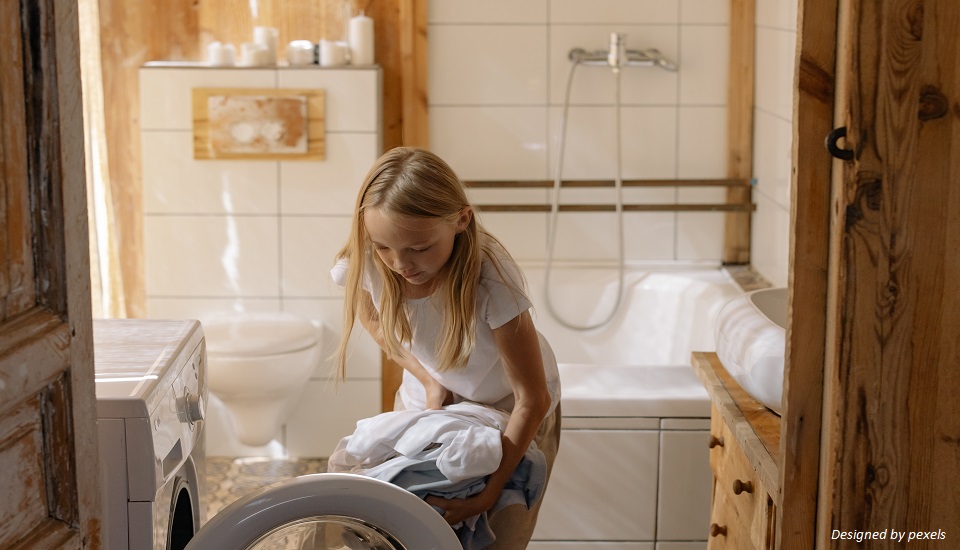Want To Teach Laundry Skills In A Special Education Classroom? Here Are 5 Tips!
9th September 2023

Life skills are essential abilities that enable individuals to navigate daily tasks and routines successfully. Special education children often require additional support and tailored resources to develop these skills. Among these vital life skills is laundry, a task that promotes independence and self-sufficiency. Read on to explore the importance of laundry skills for special education children and learn how to create effective laundry visuals to aid in their learning process.
Importance of Laundry Skills for Special Education Children
Laundry skills are crucial for several reasons, and they play a pivotal role in the lives of special education children.
Here are some key reasons why laundry skills are important:
- Promotes Independence
Learning how to do laundry empowers special education children to become more independent. They gain a sense of accomplishment and self-esteem when they can handle a task on their own.
- Enhances Daily Living Skills
Laundry is a fundamental aspect of daily living. Being able to wash, dry, and fold clothes is essential for maintaining personal hygiene and cleanliness.
- Encourages Responsibility
Laundry responsibilities teach special education children about accountability and taking care of their belongings. This skill helps them understand the consequences of their actions and the importance of organization.
- Social Inclusion
By acquiring laundry skills, special education children can participate in shared household chores, promoting social inclusion and bonding within the family.
Hey, do you follow us on Social Media? We regularly share upgraded educational content, tips, feedback and more. Check us out by clicking the profiles here - Facebook / Twitter / LinkedIn / Pinterest / Instagram / YouTube
Creating Effective Laundry Visuals
Visual aids are incredibly valuable for special education children as they rely on visual learning methods. Creating effective laundry visuals can make the learning process more accessible and engaging.
Here's a step-by-step guide on how to create these visuals:
- Identify Key Laundry Steps
Start by breaking down the laundry process into simple, manageable steps. These steps may include sorting clothes, loading the washing machine, selecting the appropriate settings, adding detergent, starting the machine, transferring clothes to the dryer, folding, and putting away. Mark the most frequently used settings so that they can easily feed the inputs to the washing machine.
- Use Clear and Simple Graphics
Visuals should be easy to understand. Use clear, concise, and simple graphics to represent each step. For example, use pictures or symbols of clothes, laundry scoops, washing machines, and detergent. Show them visuals for folding their pants, shirts, socks, etc. You can also use a laundry folding board to ease the process for students.
- Color Coding
Assign specific colors to different steps to create visual associations. For example, use blue for sorting clothes, red for the washing machine, and green for folding. This helps special education children remember and follow the sequence. Furthermore, make them practice repeatedly so that they can familiarize themselves with the tasks before they are exposed in real life.
- Visual Schedules
Create visual schedules that outline the entire laundry process from start to finish. Use a timeline format to show the order of tasks. Include images or icons to represent each step. Once the visual aids are prepared, provide opportunities for hands-on practice. Supervise and guide special education children through the laundry process, using the visuals as a reference.
- Hands-On Materials
Consider using tactile materials like fabric samples, Velcro, or textured paper to enhance the visual aids. This provides a multisensory experience, making it easier for special education children to grasp the concepts. Place visual prompts in the laundry area. For instance, you can attach a laminated visual guide to the washing machine or dryer. This serves as a reminder for special education children when they are performing the task independently.
- Interactive Activities
Incorporate interactive activities into the learning process. For instance, you can create a "Laundry Day" board game or a matching game where children match laundry items to the appropriate steps. Reinforce the learning by consistently using the visuals and encouraging repetition. Repetition helps solidify the knowledge and skills.
- Progress Tracking
Develop a system for tracking progress. Special education children can use stickers, checkmarks, or stars to mark each completed step on their visual schedule. This provides a sense of accomplishment and motivation.
Grab The Resources And Conduct A Laundry Day
Laundry skills are an essential aspect of daily living that can significantly benefit special education children. If you have completed a Special Education course Online or Offline then you will be able to teach these skills through effective laundry visuals and improve their overall quality of life. Visual aids, when used consistently and reinforced with practice, can empower these children to acquire valuable life skills and achieve greater independence in their daily lives.
We believe education should be accessible for everyone. That’s why we don’t charge for our blogs. Find the right course that will help you in your career with us, contact us at - +6621056101. You can mail us at act@asiancollegeofteachers.com

